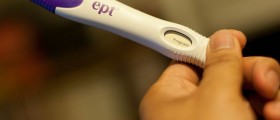
Condoms
Condoms (and remember, despite the popularity of the male condom there are female condoms as well) are not the most popular option among long term partners who know neither has any sexually transmitted diseases (see STD testing). They can be a bit of a nuisance, but they are quite effective at preventing pregnancy and they don't contain any hormones.
Cervical barriers or diaphragms
Diaphragms are cervical barriers that are fitted snugly to the cervix in combination with spermicide. They are 80 to 90 percent effective at preventing pregnancy when used correctly, and can be left in place for 24 hours. Many couples do not like them, especially when they use cervical barriers frequently.
Copper coils or intrauterine devices
Mirena coils that contain hormones are common now, but simple copper coils, or intrauterine devices, are also effective. They are t-shaped devices that are inserted into the uterus and are said to be up to 98 percent effective. But many women complain of heavy menstrual periods and cramps. The advantage of a copper coil are the fact that it is more effective than many other methods, and no continuous action is required. After it is placed in the uterus, you can forget about it.
Charting to avoid and the withdrawal method
Also referred to as Natural Family Planning, fertility charting on the basis of basal body temperature, cervical mucus and cervical positioning gives you information about when you are fertile. You can then avoid intercourse during your fertile time. The withdrawal method can be used in combination with charting to avoid, or separately. The success rates of these methods are unclear, though many women say fertility charting can be extremely effective.

















Your thoughts on this
Loading...